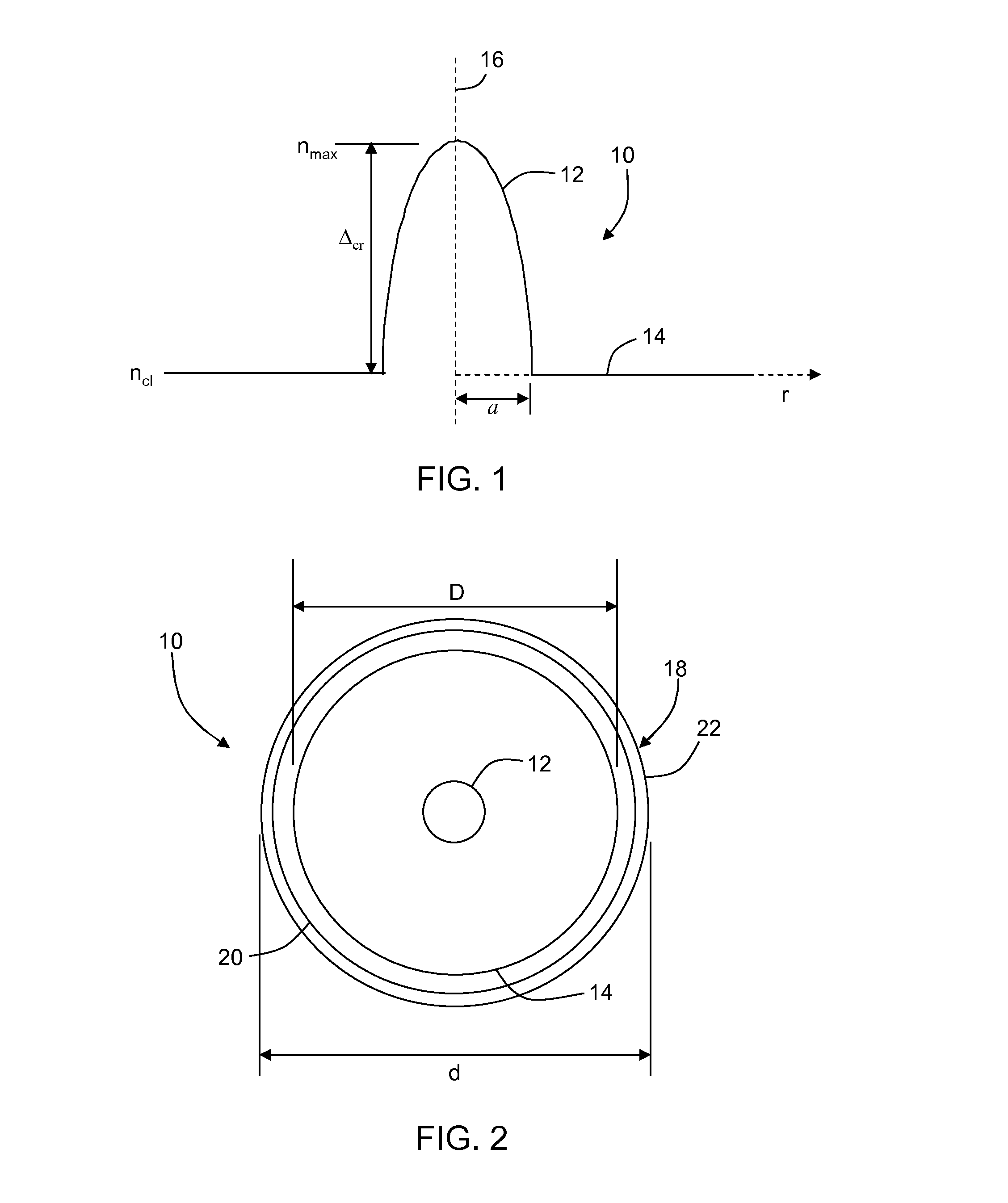Method of making a multimode optical fiber
a multi-mode optical fiber and manufacturing method technology, applied in the field of manufacturing optical fibers, can solve the problems of limiting bandwidth, affecting the bandwidth of optical fiber, and affecting the core of the moat interface,
- Summary
- Abstract
- Description
- Claims
- Application Information
AI Technical Summary
Benefits of technology
Problems solved by technology
Method used
Image
Examples
Embodiment Construction
[0039]Reference will now be made in detail to embodiments of the invention, examples of which are illustrated in the accompanying drawings. Whenever possible, the same reference numeral will be used throughout the drawings to refer to the same or like parts.
[0040]The “relative refractive index difference”Δ is defined as Δ=100×(ni2−nREF2) / 2ni2, where ni is the maximum refractive index in region i, unless otherwise specified herein. The relative refractive index difference is measured at 850 nm unless otherwise specified. The relative refractive index difference is typically referred to simply as “delta”. Unless otherwise specified, nREF is the average refractive index of the outermost annular region of the cladding, which can be calculated, for example, by taking “N” index measurements (ncl1, ncl2, . . . ncN) in the outermost annular region of the cladding (which in some embodiments may be undoped silica), and calculating the average refractive index by:
i=N
ncl=(1 / N)Σnci
i=1 (1)
[004...
PUM
| Property | Measurement | Unit |
|---|---|---|
| Length | aaaaa | aaaaa |
| Fraction | aaaaa | aaaaa |
| Fraction | aaaaa | aaaaa |
Abstract
Description
Claims
Application Information
 Login to View More
Login to View More - R&D
- Intellectual Property
- Life Sciences
- Materials
- Tech Scout
- Unparalleled Data Quality
- Higher Quality Content
- 60% Fewer Hallucinations
Browse by: Latest US Patents, China's latest patents, Technical Efficacy Thesaurus, Application Domain, Technology Topic, Popular Technical Reports.
© 2025 PatSnap. All rights reserved.Legal|Privacy policy|Modern Slavery Act Transparency Statement|Sitemap|About US| Contact US: help@patsnap.com



